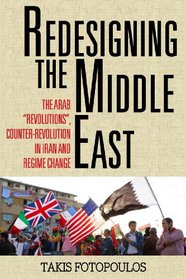Search -
Redesigning the Middle East: The Arab "Revolutions," Counter-Revolution in Iran and Regime Change
Redesigning the Middle East The Arab Revolutions Counter-Revolution in Iran and Regime Change
Author:
This book seeks to demystify the causes of the ongoing Arab "revolutions? that have been completely distorted by the first real 'media wars' in history, compared to which the media war launched on the occasion of the Iraq invasion seems just a dress rehearsal. Libya and Syria represent the first cases of a complete manipulation of the 'world c... more »
Author:
This book seeks to demystify the causes of the ongoing Arab "revolutions? that have been completely distorted by the first real 'media wars' in history, compared to which the media war launched on the occasion of the Iraq invasion seems just a dress rehearsal. Libya and Syria represent the first cases of a complete manipulation of the 'world c... more »
ISBN-13: 9780985271077
ISBN-10: 0985271078
Publication Date: 9/15/2012
Pages: 252
Rating: ?
ISBN-10: 0985271078
Publication Date: 9/15/2012
Pages: 252
Rating: ?
0 stars, based on 0 rating
Genres:
- Reference
- Nonfiction >> Current Events >> Civil Rights & Liberties
- Nonfiction >> Politics
- Nonfiction >> Social Sciences




